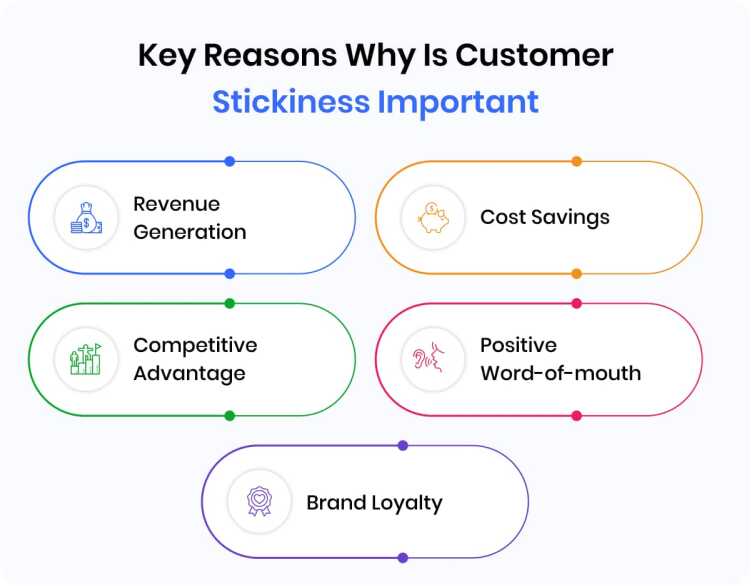
In the fast-paced world of financial technology (fintech), winning and maintaining customer stickiness is paramount for sustained growth and success. As the fintech landscape continues to evolve, companies face increasing competition and shifting customer expectations. To thrive in this dynamic environment, businesses must not only attract customers but also keep them engaged and loyal over the long term. In this comprehensive guide, we’ll explore how leveraging metrics such as Daily Active Users (DAU), Monthly Active Users (MAU), and Weekly Active Users (WAU) can enhance and deepen your understanding of customer stickiness in the era of fintech.

In the fintech industry, customer stickiness refers to the ability of a company’s products or services to retain customers and keep them engaged over time. With a myriad of options available to consumers, building and maintaining stickiness is critical for driving revenue growth, reducing churn, and fostering brand loyalty. In an era where customer expectations are continually evolving, businesses must continuously innovate and adapt to stay ahead of the curve.
Understanding DAU, MAU, and WAU Metrics
- Daily Active Users (DAU) : DAU measures the number of unique users who engage with a fintech platform on a daily basis. This metric provides real-time insights into the level of daily engagement and activity. A high DAU indicates strong user interest and active usage of the platform, while a declining DAU may signal potential issues with user experience or relevance.
- Weekly Active Users (WAU) : WAU tracks the number of unique users who engage with a fintech platform within a week. Similar to DAU, WAU provides insights into user activity over a broader time frame, allowing businesses to assess the consistency of engagement throughout the week.
- Monthly Active Users (MAU) : MAU measures the number of unique users who engage with a fintech platform within a month. This metric offers a more long-term view of user engagement and retention compared to DAU and WAU, enabling businesses to evaluate the overall growth and stability of their user base over time.
Leveraging Metrics for Enhanced Customer Stickiness

By incorporating DAU, WAU, and MAU metrics into their analytics toolkit, fintech companies can gain valuable insights into user behavior, preferences, and engagement patterns. Here’s how these metrics can be leveraged to enhance customer stickiness :
- Identifying Trends and Patterns : Analyzing DAU, WAU, and MAU data allows businesses to identify trends, patterns, and fluctuations in user engagement. By understanding when and how users interact with their platform, companies can tailor their strategies to meet user needs and preferences more effectively.
- Optimizing User Experience : High DAU, WAU, and MAU are indicative of a positive user experience and high levels of customer satisfaction. By monitoring these metrics, fintech companies can identify areas for improvement and optimize their platform’s user experience to enhance stickiness and retention.
- Driving Personalization and Engagement : Understanding user engagement patterns enables fintech companies to deliver personalized experiences and targeted messaging to their customers. By leveraging insights from DAU, WAU, and MAU metrics, businesses can segment their user base and tailor their offerings to specific customer segments, thereby increasing engagement and stickiness.
- Predicting and Preventing Churn : By closely monitoring DAU, WAU, and MAU trends, fintech companies can identify users who are at risk of churning and take proactive measures to retain them. By implementing targeted retention strategies and interventions, businesses can reduce churn rates and increase customer lifetime value.
Case Study : How XYZ Fintech Leveraged Metrics to Enhance Customer Stickiness
Let’s take a closer look at how XYZ Fintech, a leading player in the digital banking space, utilized DAU, WAU, and MAU metrics to enhance customer stickiness :
- Data-Driven Decision Making : By analyzing DAU, WAU, and MAU data, XYZ Fintech gained valuable insights into user behavior and preferences. They identified peak usage times, popular features, and areas for improvement, enabling them to make data-driven decisions to enhance the user experience.
- Targeted Marketing Campaigns : Leveraging insights from DAU, WAU, and MAU metrics, XYZ Fintech launched targeted marketing campaigns to re-engage inactive users and promote new features to active users. By delivering personalized messages and offers, they were able to increase user engagement and retention rates.
- Continuous Optimization : XYZ Fintech continuously monitored DAU, WAU, and MAU trends and iteratively optimized their platform based on user feedback and analytics data. By prioritizing features and enhancements that resonated with their user base, they were able to maintain high levels of customer stickiness and satisfaction.
Conclusion : Elevating Customer Stickiness in Fintech
In the fiercely competitive landscape of fintech, mastering customer stickiness is essential for sustained growth and success. By incorporating metrics such as DAU, WAU, and MAU into their analytics framework, fintech companies can gain deeper insights into user engagement and retention, enabling them to optimize their strategies and foster stronger customer relationships. In the era of financial technology, leveraging data-driven insights is key to staying ahead of the competition and delivering exceptional experiences that keep customers coming back for more
Hello quantyc.ai admin, Your posts are always well-supported by facts and figures.